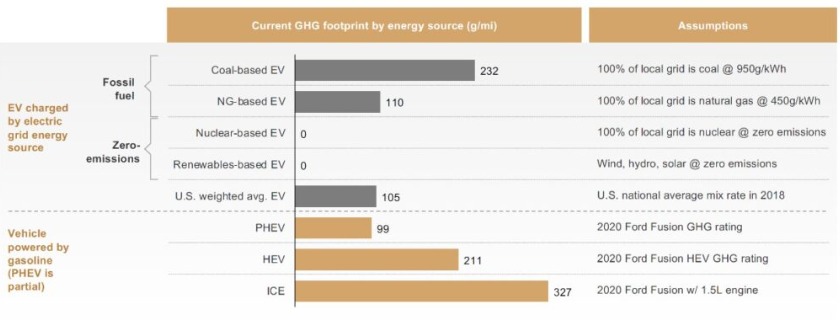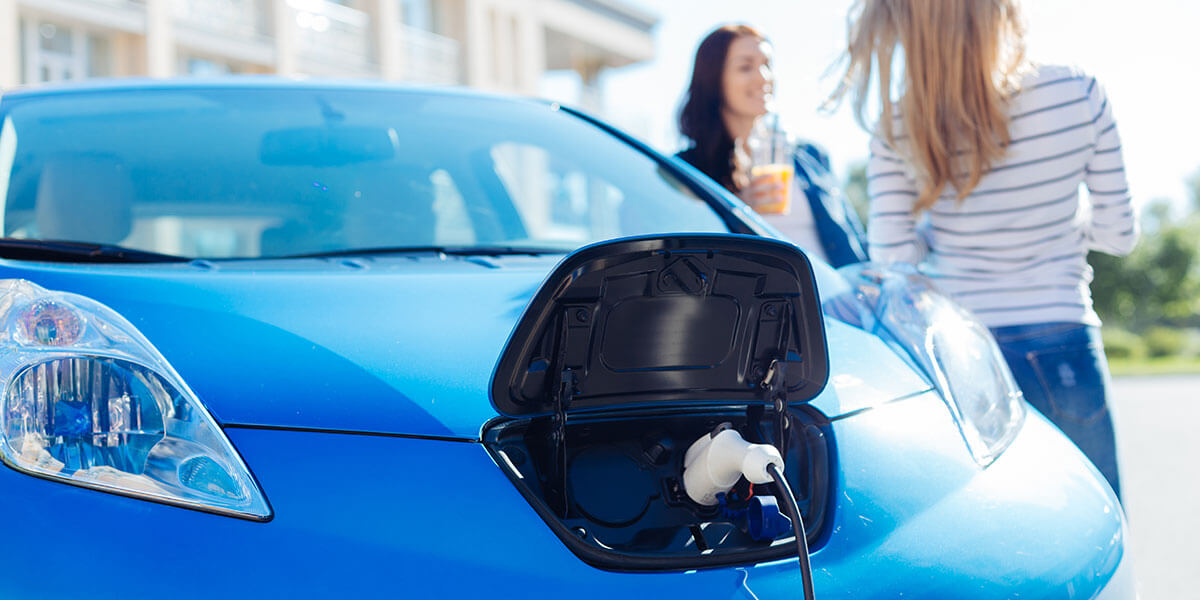At COP26 in Glasgow this year, one of the recurring themes was the evolution of strong greenhouse gas (GHG) and zero-emission standards for vehicle manufacturers. Over the past two years, electric vehicles (EVs) have enjoyed tremendous growth in sales due to the introduction of attractive and innovative products. It’s about time we take a look at the top EV trends – some resurfacing, others emerging – that will drive disruption in the automotive industry in 2022.
1. EV production will adopt an eco-friendly approach
Nearly a quarter of direct carbon-dioxide emissions are attributed to transportation. Passenger cars account for 45% of these emissions. A cleaner automobile may solve the tailpipe-emission issue. However, greenhouse gases released while producing battery-electric cars account for a greater share of life-cycle emissions.
To illustrate, carmakers are using aluminum to make light-weight body designs, with EVs using 45% more aluminum than traditional cars. Additionally, the materials used for essential parts of the batteries are even more carbon-intensive. Hence, the question arises: are battery-powered EVs more environmentally friendly than ICE vehicles?

Source: Paul Eichenberg
Moving ahead, one of the major EV trends will be the increasing importance of supply chain decarbonization. In the future, much attention will be paid to improving infrastructure, sourcing green energy, and improving manufacturing techniques. The goal is simple: to drive greenhouse gases down significantly.
Furthermore, recycling key battery components will also help reduce its environmental impact. Small companies like Nano One Materials Corp and Euro Manganese Inc are already looking for ways to decarbonize battery supply chains. Eventually, established industry players will need to do their part to keep up with such essential innovations.
2. OEMs will explore ways to rapidly expand EV portfolio
The pandemic has triggered a growing need for personal mobility. Also, rising fuel costs are bagging electric vehicles (EV) more customers, compelling automakers to impress with cutting-edge innovations. A modular EV platform is a native, purpose-built architecture that makes the manufacturing of EVs more efficient in the long term as it is simpler to assemble and can save up to USD 600 per vehicle. By keeping EV platforms flexible, companies can increase or reduce the production of a particular drivetrain according to demand.
Launched amid the pandemic outbreak last year, General Motors’ Global EV platform features high levels of built-in configurability because the firm’s proprietary Ultium batteries allow more flexibility of formats. This new modular platform can build a wide range of trucks, SUVs, crossovers, cars, and commercial vehicles with improved design, performance, packaging, range, and affordability.
Source: General Motors
As the automotive industry continues to adopt electrification, stakeholders will face profitability challenges over the next few years. To address cost issues, automakers will need to consider partnering with competitors on modular EV platforms. These platforms will accelerate vehicle electrification, focusing on ways to lower cost, increase driving range, and revolutionize next-generation EV architecture to scale e-mobility.
3. Increasing driving range and battery capacity
Currently, the primary challenge to EV public acceptance is vehicle driving range. Additionally, a lot of noise energy in EVs today is generated by the vehicle traction inverter. Tesla, for example, uses coaxial cables in its vehicles for electrical interconnect. Capturing, repurposing, and reusing this noise can reduce the required battery current and in turn, increase EV driving range mileage.
Furthermore, an EV’s battery technology impacts the frequency of charging sessions required by that vehicle. Electric cars can cover moderate distances with one charge, while some have high ranges. In the past decade, approximately 406k MWH of EV batteries have been placed in the market, 34% of which have been added in 2020.

Source: IEA
By 2022, the average EV range is estimated to be 275 miles. Moreover, the current EV trends suggest that battery recycling will be favored over the next 2-3 years. However, in the long-term, second-life use applications will gain momentum due to technological advances, regulatory clarity, and proven business models.
4. Profitable EV trends in fleet economics will appeal to more fleet operators
Electric models will become more readily available from 2020 to 2023 across a variety of segments, such as buses, medium-duty trucks, and heavy-duty trucks. The move shows manufacturers’ commitment to electrification. Truck makers such as Daimler, MAN, Renault, and Volvo plan to go 100% electric in the future.
To illustrate, a total of 7,400 electric heavy-duty trucks were registered globally in 2020, showing an increase of 10% from the prior year. Most last-mile delivery trucks and vans travel less than 50 miles per day and serve predictable routes: a range that is well within the capabilities of today’s EV battery technology. Fleets like these provide services in the electrification “sweet spot” – charging overnight at the yard and extending batteries during the day.

Source: IEA
Due to the surge in at-home deliveries during the pandemic, fleet electrification plans have been boosted. During the next two years, one of the major EV trends will be the electrification of class 4 to 6 mid-class trucks. Grants and cost-sharing agreements will play a role in helping with the installation of EV charging infrastructure.
In 2022, it is expected that electrification will extend into heavier applications. CHAdeMo association and CharIN are making efforts to develop standards for mega chargers (above 1 MW). Moreover, other market players are working towards harmonizing standards globally to smooth the rollout of electric HFT.
5. Increasing focus on expanding public charging network
The EV charging networks facilitate orderly charging and market transactions using blockchain technologies. Additionally, a coordinated Internet of Vehicles connects people, vehicles, and charging stations. This can further implement a cloud battery management system. In 2022 and beyond, the charging infrastructure will become an essential element that can drive the Energy Internet.
For instance, Tata Power currently has a presence in 65 cities in India with over 400 charging points. The company is now expanding its footprint in over 100 cities with its Public Charging Network. The aim is to set up an EV charging infrastructure of over 700 charging stations nationwide.
Public charging infrastructure will fully enable the integration of power infrastructure investment and the Internet infrastructure. Additionally, it will implement various new technologies and models to achieve a truly green energy society.
Conclusion
Platform characteristics, assembly of battery technology, and the effects of charging infrastructure are at the core of the EV segment’s growth. As the automotive industry continues to adopt electrification, the aforementioned EV trends will rely heavily on stakeholder collaboration. This will pave the way for leading OEMs to reduce the fixed-cost burden of R&D, tooling, and plants, and to enable multiple model variants.
| Over the last two decades, Netscribes’ automotive industry solutions have helped leading automakers, OEMs, and other key players understand the impact of emerging technologies and identify new growth opportunities. To learn how we can help you drive innovation and strategically navigate the evolving automotive landscape, contact us. |






